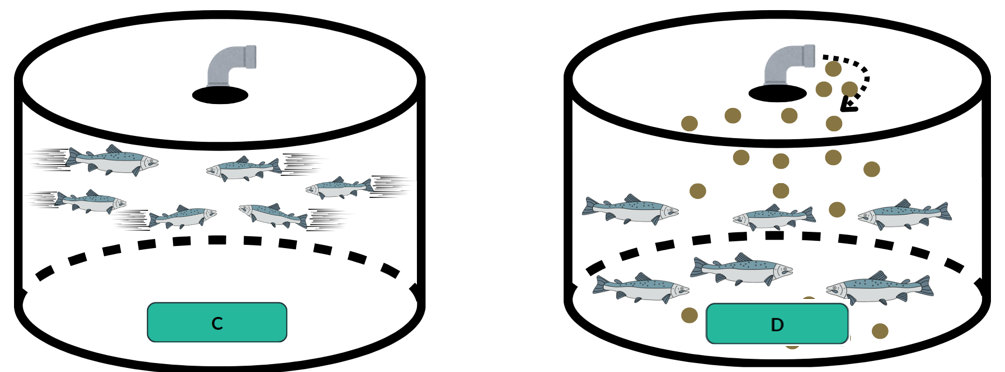Feeding Station


Carry out remote feeding tasks from a salmon feeding station to ensure all cages receive adequate feed whilst also reducing wastage from overfeeding.
Salmon are fed on diets which are specially designed to meet their nutritional needs and must be fed in a way which minimises their impact on the environment. The release of feed can be controlled remotely, making use of technology to gather environmental information.
Feeding behaviour as an indicator of health
Feeding behaviour as an indicator of health
The appetite of a salmon is linked to its health meaning that changes in feeding behaviour can be an early sign of stress or disease. Closely monitoring and understanding their behaviour when conducting feeding is essential to ensure salmon well-being and productivity.

Which cage diagram likely indicates good health of the salmon in response to feed being given? A or B?
Which diagram may indicate a change in water quality or the presence of a pathogen? A or B?
Remember that a high concentration of fish near the feeding area is a good indicator that the fish have a high motivation to feed and aren’t stressed.
The importance of giving salmon the right amount of feed
The importance of giving salmon the right amount of feed
Overfeeding and underfeeding of salmon can both lead to problems. Too much feed can cause water quality issues by increasing ammonia levels which is harmful to fish. It can increase stress, harm their gills and make them more susceptible to disease. It can also encourage the growth of harmful bacteria. Too little can stunt growth and weaken the fish, slow growth also means an increased number of production days to reach the optimum weight before harvesting. By carefully calibrating feeding practices, farmers can ensure their fish get the right amount of nutrition without wasting resources.

Which cage diagram represents increased swimming activity prior to feeding which may indicate underfeeding? C or D?
Which diagram may indicate overfeeding and could lead to feed wastage and pollution of the environment? C or D?